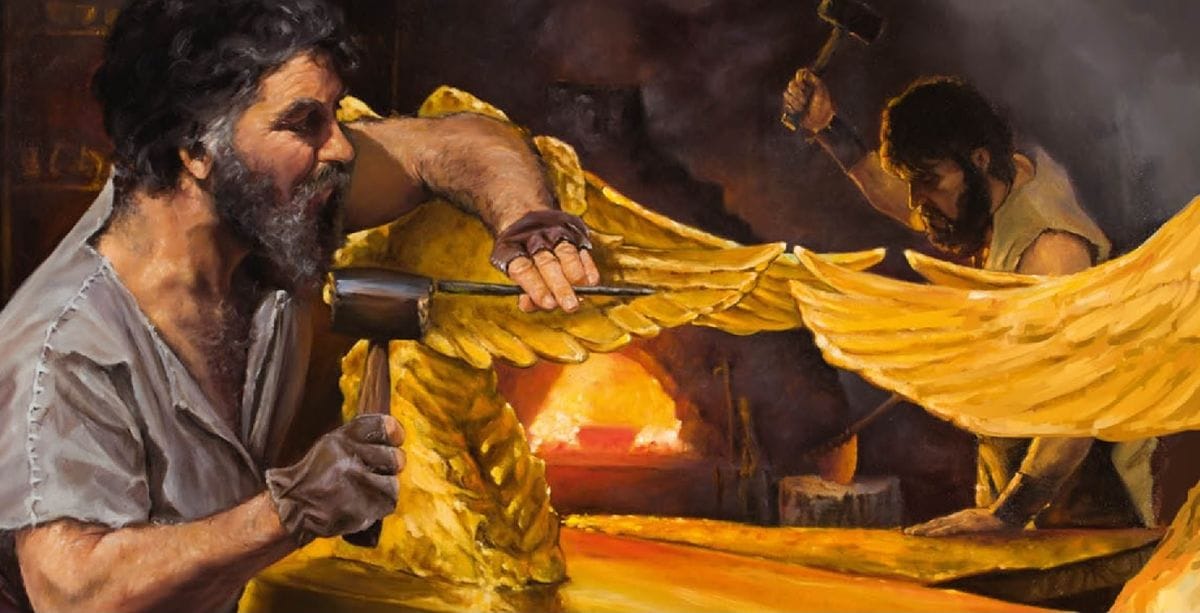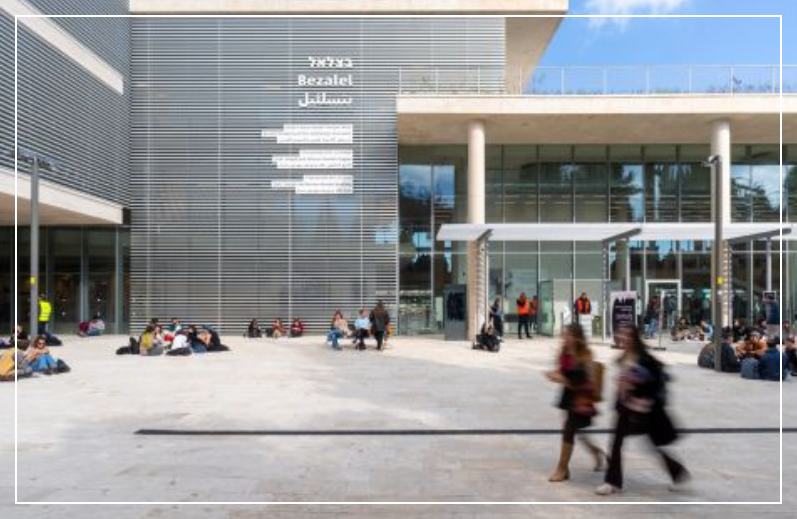When Wisdom Builds a Sanctuary

I was asked whether Bezalel entered the Promised Land or not.
Here are my considerations on this matter.
What an amazing man was Bezalel!
“And the Lord spoke to Moses, saying: See, I have called by name Bezalel son of Uri son of Hur, of the tribe of Judah. And I have filled him with the Spirit of God — in wisdom (ḥokhmah), and in understanding (tevunah), and in knowledge (da‘at), and in all craftsmanship (melakhah), to devise designs, to work in gold, and in silver, and in bronze, and in cutting stones for setting, and in carving wood, to work in every kind of workmanship.” (Ex. 31:1–5)
This is the first time in Scripture that someone is said to be “filled with the Spirit of God,” and strikingly, it is not for prophecy or leadership, but for artistic creation.
The triad ḥokhmah – tevunah – da‘at (“wisdom, understanding, knowledge”) anticipates Proverbs 3:19–20, where God Himself uses wisdom, understanding, and knowledge to found creation. Bezalel’s craftsmanship on the Mishkan thus mirrors divine creation itself.
Bezalel is “called by name” (karati ve’shem), just as prophets are called. His vocation is not accidental; it is divine election. Jewish oral tradition holds that Bezalel was astonishingly young, perhaps only thirteen to sixteen years old, when he received this calling. His skill was not the fruit of long years of apprenticeship, but a direct gift from God.
Do you know that about 50–60% of Mishkan construction remains in the realm of mystery or uncertainty — exact forms, artistry, techniques, materials, and symbolic details? In other words, half of the Mishkan is clear, half is mystery. This is intentional: the Mishkan is both knowable and unknowable, earthly yet heavenly.
Bezalel understood that half that Moses had not explained — a kind of prophetic insight into the mind of God.
The Torah itself remains silent about Bezalel’s later life. Beyond Exodus 31, 35, and 36, we no longer hear his name. He is absent from the books of Joshua and Judges, so we cannot know whether he entered the Promised Land. A genealogical note in Exodus 31:2 tells us he was the grandson of Hur, the one who, together with Aaron, upheld Moses’ hands in the battle with Amalek. This situates Bezalel in the generation of the Exodus, and if he was so young at Sinai, it is not impossible that he lived long enough to see the conquest. The generation that came out of Egypt (those 20 years and older, except Joshua and Caleb) died in the wilderness because of unbelief (Numbers 14:29–30).
What Jewish wisdom literature preserves about him is less biography and more archetype. Bezalel becomes a symbol of Spirit-filled craftsmanship, the man who built God’s dwelling on earth. His very name, “in the shadow of God,” conveys his identity and future. In Jerusalem, there is a prestigious art and design academy named “Bezalel Academy of Arts and Design”. It is Israel’s oldest and most famous art school.

Bezalel legacy does not rest on whether he walked into Canaan but on the Sanctuary he left behind — the dwelling of God used for 40 years of travels. After the crossing into the Promised Land the Mishkan stood in Gilgal for 14 years … in Shiloh for 369 years … Each time the Mishkan was set up, the shadow of Bezalel was there, his vision and dedication carried forward.
His greatness was not in speeches or battles, but in allowing divine wisdom to flow through his craft. Our lives, too, are not measured only by our personal journeys but by the traces of God’s touch that speak loudly through what we create, what we shape, and what we leave behind. Bezalel reminds us that the Spirit can fill even the hands of a youth, and that faithful, Spirit-filled creativity may outlast our own names, becoming a lasting shadow of the presence of God.